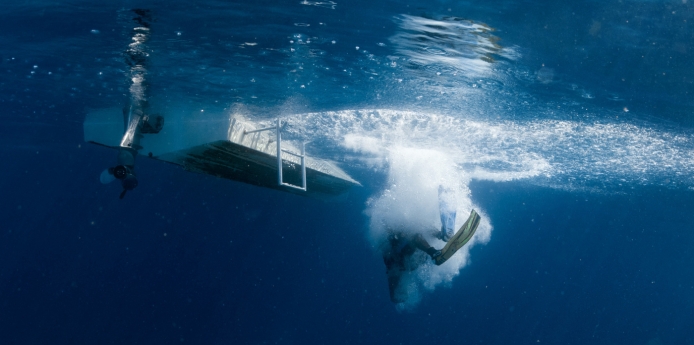By guest blogger Beth Alexander
It’s important to learn proper descent techniques and to descend in a controlled manner in order to avoid any complications. Here are a few tips to make your first (or next) descent a breeze.
Descending too fast can lead to an increased risk of equalization problems, so don’t rush it. Control your descent to allow air spaces, such as ears, sinuses and mask, to equalize as the pressure changes during your descent. After you and your buddy have made your entries, relax, regroup and recheck. If you’ve got time before the group descends, float comfortably buoyant on the surface with your snorkel or regulator in your mouth. Then, simply place your face in the water and take a moment to establish a comfortable breathing pattern. It’s this breathing pattern that will help you relax and make your descent a lot easier and your dive more enjoyable. You can then begin to recheck your equipment to make sure that nothing has come lose on your entry, or that any hoses are leaking or free flowing.
A diver must be able to control their descent to make sure that they do not harm or damage the environment below them — a simple errant fin kick could kill the coral or injure aquatic life. Even if descending onto a sandy bottom, you could stir up the sediment, resulting in decreased visibility, so watch where you’re going.
When descending it is important to stay close to your buddy, so that he or she can help with any potential problems and so that you can avoid buddy separation.
Equalize your ears on the surface before trying to descend. By doing so you are preparing them for subsequent equalizations and helping to compensate for the initial and more-extreme pressure changes near the surface. This should help reduce any equalization problems that may occur during your descent. Equalize with every breath during your first 30 feet, even if you feel you don’t need to, and be sure to equalize before you start feeling pain in your ears.
Perform a weight check. Being weighted correctly will help you descend in a more controlled manner. Never try to force a descent, i.e. by duck-diving down, as this can lead to further complications on your dive. Take your time to get your weighting right.
Once the signal has been given to descend, only proceed when you’re comfortable and ready to do so with your buddy. Hold up your low-pressure inflator and release all the air from your BCD, but also remember to breathe out. Your lungs also act as BCD, so controlled outward breaths will help you descend in a controlled manner.
Another simple way to make your descent easier, and one that many new divers forget, is to simply stop finning. Stop all kicking and other body motions and simply relax in the water, allowing your BCD to control your buoyancy.
When you’re new to diving, using a reference line can also help you control your depth and speed of descent. If you ever feel more comfortable using a line to descend, never feel shy to ask for one.
We hope these simple tips make your next descent easier, but the most important one we’ve shared is to remain calm and comfortable. The more comfortable and in- control you feel, the easier the descent and, therefore, the more enjoyable the dive.









